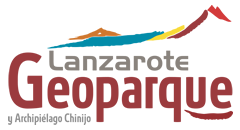Project Description
Mountain Rajada is one of the largest isolated volcanic structures of the historic eruption of Timanfaya. It consists of a complex morphological cone which is a result of its construction around several craters that are aligned in the direction of the main Timanfaya fracture and displays distinctive eruptive styles. The main crater houses a lava lake inside affected by circular fractures, formed by the magma falling into the inside of the volcanic conduit. An eccentrically arranged volcanic cone rests on this lake with plenty of spheroidal volcanic bombs with xenoliths of sedimentary origin. These xenoliths were uprooted from the base during the magma fall. In the southwest flank of the Cone several emission centres were opened showing variations of eruptive behaviour based on their relative height, with the headquarters located at the centre of most explosive activity and showing those with lower activity as exclusively effusive.
This geosite is of major volcanological and secondary geomorphological, petrological and tectonic type interest. It is part of the Geosite “VC007 Parque Nacional de Timanfaya” which is of international importance. Formed during a single volcanic episode, Montaña Rajada is an exceptional example of the variations that can be observed in both temporal and spatial eruptive dynamics and from the vast morphological variety (accretion balls, lava lake, submerged crater, hornitos, volcanic tube-canal, jameo) associated with volcanic cones that have these characteristics.

